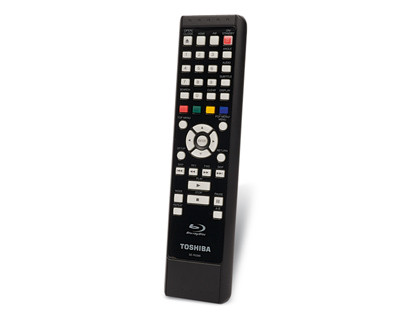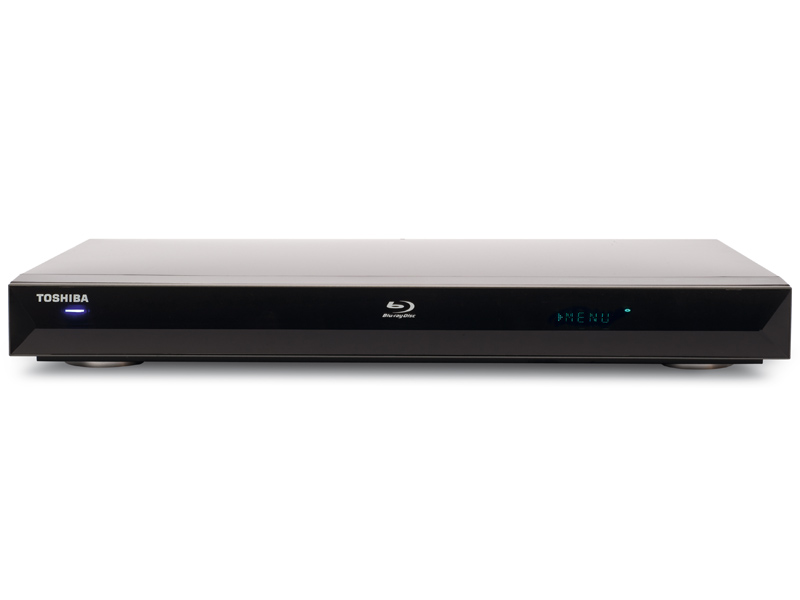TechRadar Verdict
There's nothing here you wouldn't find on a £99 deck save for consistently excellent pictures from both Blu-ray and DVD
Pros
- +
Picture quality from Blu-ray and DVD
- +
Easy setup
Cons
- -
No USB port
- -
Wi-Fi or built-in memory
- -
Slow disc loading
Why you can trust TechRadar
After the demise of its own HD DVD format, Toshiba's eventual entry into the Blu-ray market was inevitable. Its debut deck is hardly going to take the market by storm, but the BDX2000 is a well-rounded, if somewhat basic, player, which delivers pin-sharp pictures from both Blu-ray and DVD discs.
Features
Toshiba's now-defunct HD DVD players were among the most advanced hi-def disc spinners around for a while, but the same isn't true of the BDX2000. It's small enough to slide beside any full HD telly, but when paired with a Toshiba LCD TV both devices can be controlled with one remote control using Regza Link.
As well as being able to play media files such as DivX and AVCHD movies (the latter format comes solely from hi-def camcorders), MP3 and WMA music and JPEG photos, the BDX2000's SD card slot is also the backbone of its BD Live ambitions.
Once the deck is connected to a broadband router via the Ethernet port on the rear panel, BD Live will work if you insert your own SD card that has a capacity of at least 1GB. Downloaded files, be they trailers, commentaries, or Java-based games, then sit on the SD card until you delete them. It's all a bit of a faff, although this method is currently the usual way of interacting with BD Live on most machines.
While it's always possible to use a 8GB SDHC card, is it really asking too much to have a few gigabytes built-in? Given how cheap storage is, we don't expect this rather clumsy situation to last much longer.
More alarming is that Toshiba's own XDE Technology for 1080p upscaling, found on its DVD players, has taken a sabbatical.
Connectivity covers the basics, though the component video output only appears to be capable of carrying 480i or 576i signal, and no hi-def video. Lossless sound formats Dolby TrueHD and DTS-HD can be sent to an AV amplifier, but only via HDMI – there are no multichannel analogue audio outputs.

Ease of use
BD Live works in the standard way; the deck connects to a broadband router, then downloads extras, commentaries or trailers to a SD card. Despite being connected to a 10MB broadband line, the BDX2000 took almost five minutes to connect to Sony's BD Live portal, though no network configuring was needed.
Once there, it took three minutes to download a two-minute clip of Terminator Salvation in HD, which occupied 266MB on the SD card. Insert a card or disc of mixed media files and the BDX2000 insists you choose between video, audio and photos using a blue 'media mode' button on the remote. It's able to play DivX video and AVCHD, but these files can only be scanned at a frustratingly slow maximum speed of 3x.
MP3 and WMA music files can also be played, though this is not a polished media player – a simple file list is presented that remains onscreen when playing music. Hi-res JPEG photos, meanwhile, are loaded quickly and presented cleanly.

Overall it's an adequate media performance, though its lack of a USB port, support for DivX HD/ MKV files, and rather rudimentary media player software does put the BDX2000 behind the curve compared to other Blu-ray players.
Loading times for BDs are achingly slow; it took just shy of 50 seconds to start playing our test disc and just over two minutes to start the movie.
Picture
Once loaded, our Life Blu-ray disc is handled superbly. A camera pan across the cliffs of the Dead Sea reveals a morsel of judder and some loss of resolution, but as an infant Ibex navigates the steep rocks there's heaps of detail and a picture that's as precise as on any budget Blu-ray player.
Another landscape of a waterfall set against a blue sky shows lush and cleanly rendered blocks of colours free of any picture noise, while the sheer detail in shots of rainfall and fine mist in a Belize rainforest show up stunning subtlety and plenty of contrast where it counts.
It may lack the finery of top-end decks, but the BDX2000 provides a marvellous recital of Blu-ray discs. Despite the absence of XDE processing, the BDX2000 does a similar job with DVDs, dragging plenty of detail from our test disc, The Lives of Others.
The opening scenes in a Berlin prison enjoy a lot of depth, though there is some colour banding and the edges of moving objects are noticeably stepped. The latter is not assisted by the machine's noise reduction function, but overall it's an impressive performance and XDE technology isn't much missed.

Sound
The BDX2000 delivers a rounded sound with plenty of bass and clarity, while offering analogue outputs to connect it to a two channel amp or hi-fi . It also deals well with Blu-ray audio formats, such as Life's DTS-HD Master Audio sound output via HDMI to an AV amplifier.
Attenborough's dialogue is always clear while surround effects are delicate and help create a well-rounded soundscape befitting this benchmark hi-def series.
Value
Despite being short on the kind of features we're keen to see become mainstream, the BDX2000 is a terrific disc spinner across the board.
While Toshiba is throwing in a free 12-month membership of the Lovefilm Blu-ray disc rental service, the deck remains slightly overpriced and our bet is that it will mostly be bundled with Toshiba's LCD TVs.
Follow TechRadar Reviews on Twitter: http://twitter.com/techradarreview
Jamie is a freelance tech, travel and space journalist based in the UK. He’s been writing regularly for Techradar since it was launched in 2008 and also writes regularly for Forbes, The Telegraph, the South China Morning Post, Sky & Telescope and the Sky At Night magazine as well as other Future titles T3, Digital Camera World, All About Space and Space.com. He also edits two of his own websites, TravGear.com and WhenIsTheNextEclipse.com that reflect his obsession with travel gear and solar eclipse travel. He is the author of A Stargazing Program For Beginners (Springer, 2015),

